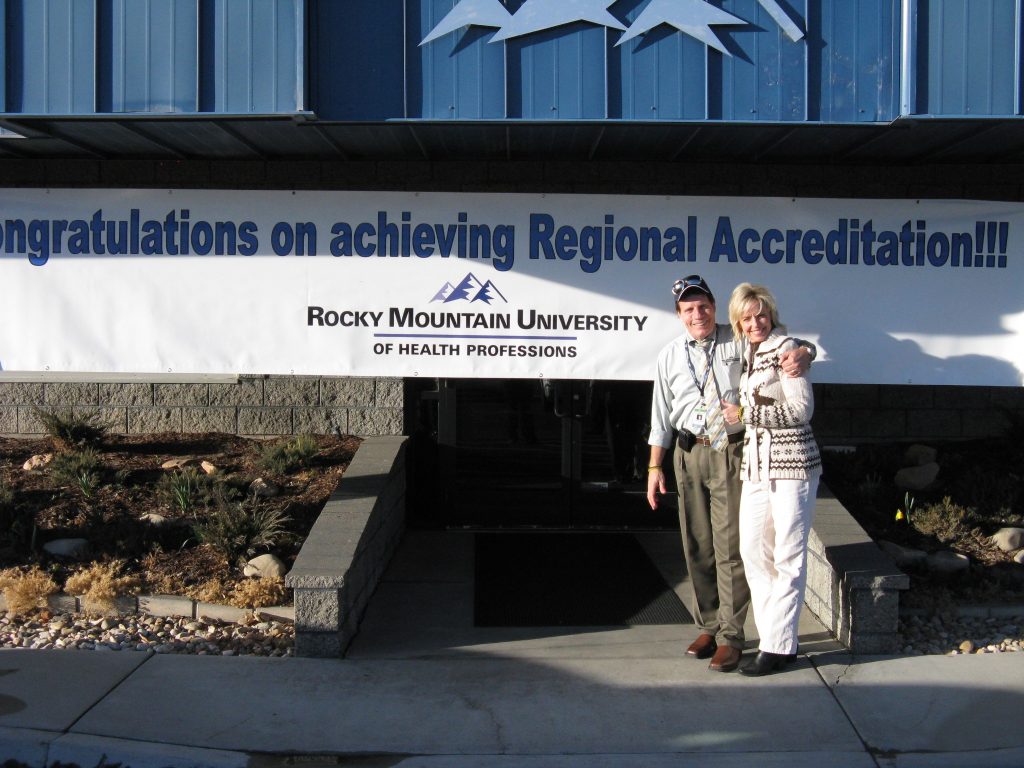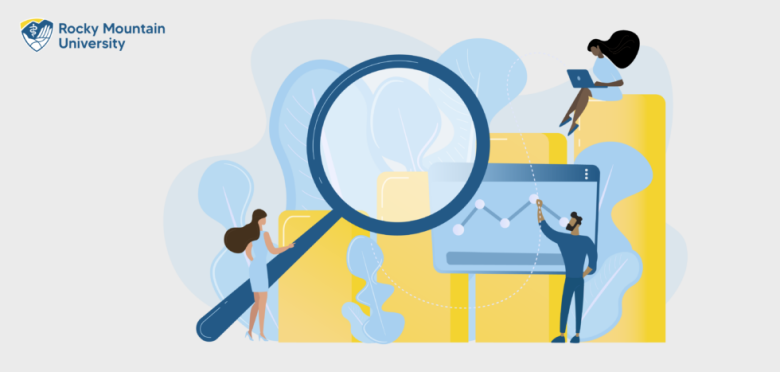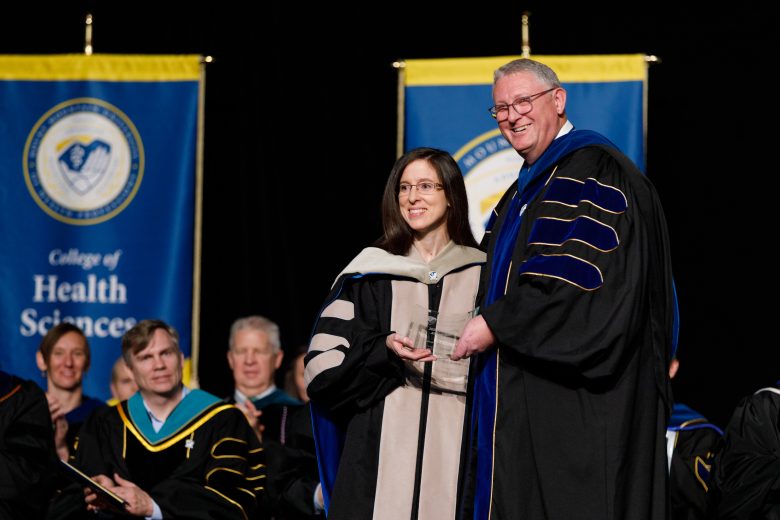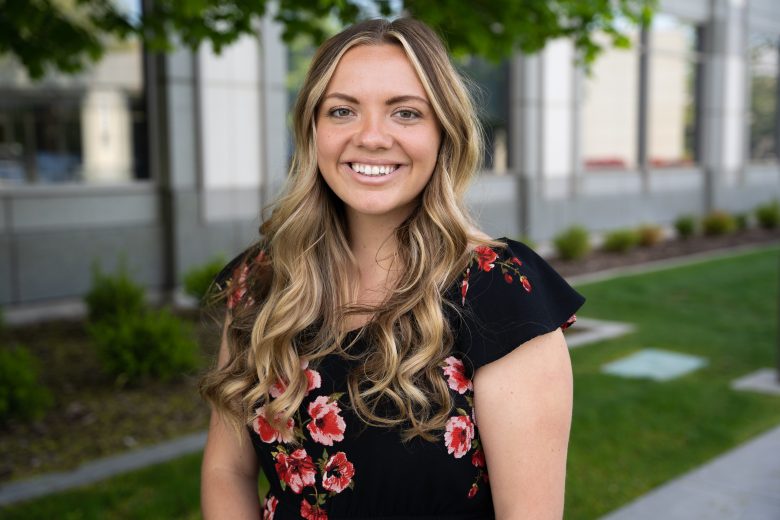
When we hear about someone building something on their back, from the ground up, there’s always an inspiring story to tell. One where motivated people take leaps of faith into a fog of uncertainty with the hope that they’ll be able to create something extraordinary. Such is the case with Rocky Mountain University of Health Professions (RMUoHP); well, at least that’s what it’s called now, it wasn’t always that way.
In fact, the roots of RMUoHP go all the way back to 1980, over 42 years ago, when founders Dr. Richard P. Nielsen and Dr. Michael Skurja, Jr., decided to take off weekends, “long weekends” as Nielsen puts it, from their careers in the U.S. Navy and travel to various cities, teaching electrophysiologic testing seminars. This would be their side project for the next twelve years.
Following their retirement from the Navy, Nielsen and Skurja decided to teach from a more permanent location in Provo, Utah, where they started the Institute of Clinical Electrophysiology. In spite of busy schedules working to establish their own private practices, they still managed to teach part-time at the institute. It was there that the sun began to rise on greater possibilities and a wider vision for the institution.
“It was about two years into our work at the institute,” Nielsen says, “ that we had this brainstorm idea to become a university, and Mike asked me the question he always asked me whenever I talked to him about crazy ideas – and that is, ‘are you out of your mind?!’ But I told Mike I thought we could do it.”
After submitting their idea to the State of Utah Board of Regents in 1995, it wouldn’t be until 1997 that they were finally approved and two years later when they finally opened their doors to the public under the name Rocky Mountain University of Physical Therapy.
With an overwhelming schedule and more responsibilities being placed on their shoulders, Nielsen and Skurja decided to bring on co-founder Dr. Larry Hall. With a PhD and a few decades of experience working in higher education, Hall quickly became a key player in RMUoHP’s development. However, despite the added help, the newly-founded university still found itself in very serious financial straits.
Loans needed to be paid back and payroll still needed to be met. To make it worse, because the university was not accredited at that time, prospective students could not qualify for student loans, making it impossible to collect tuition revenue.
Then the unthinkable happened. In September of 2001, the 9/11 terrorist attacks shut down flights across the country. All of a sudden students and faculty made choices not to travel by air. The university was left with large debts to pay and no students or faculty coming.
However, despite the impossible financial struggles that never seemed to end, Nielsen affirms that money was never their focus. “It has never ever been about the money. We were interested in providing quality education. We were interested in developing our employees, giving them opportunities for growth in this newly formed university. We were interested in growing a university that would affect change in the lives of people across the entire world. And we are doing that now.”
In the midst of this financial crisis, Nielsen and Skurja were shocked when Hall suddenly decided to leave the university. Nielsen and Skurja were at a crossroads: continue on or shut down. “We’re God-fearing people,” Nielsen says, “and we prayed. And I’ll never forget that prayer. Heavenly Father, what do you want us to do? And the answer was: You stay.”
After the prayer, and exchanging high fives and a hug, Nielsen and Skurja left the office deciding they would “Only look onward and never look back.”
One of the key objectives for RMUoHP’s success was regional accreditation with the Northwest Commission on Colleges and Universities (NWCCU). Nielsen had contacted the commission in 1997 expressing interest in becoming regionally accredited, only to be told that the process would take a dozen or so years. Optimistically the earliest they could become accredited was 2010.
The news shocked Nielsen, but after being assured that it was the only way, he replied, “Well, we better get started.”
Soon into the process, Nielsen and Skurja discovered that NWCCU would not accredit institutions with a single-entity focus. In order to be considered, they would need to have “multi-discipline offerings” so RMUoHP began considering programs like occupational therapy (OT) and nursing. In December of 1999, having met the multi-discipline requirements, they petitioned to have their name changed from Rocky Mountain University of Physical Therapy to Rocky Mountain University of Health Professions.
Throughout the years, the NWCCU conducted routine on-site evaluations as part of the accreditation process. Although RMUoHP satisfactorily passed every evaluation over the twelve year period, there were often concerns identified about aspects related to a small but growing university.
During the last site visit before the NWCCU’s final decision, many members of the commission were still leery and resistant to accredit a proprietary institution. And after nearly thirteen years of hard work, RMUoHP was denied regional accreditation.
The University was now faced with either petitioning the decision or waiting two years to begin the accreditation process again, which would mean starting all over from the beginning. Believing the commission’s decision could be successfully contested, Nielsen took the RMUoHP leadership team to the NWCCU campus in Seattle, where they met with the 25 members of the NWCCU Commission.
The Commission chambers were daunting with Commissioners representing over 400 years of experience. “It was humbling, and scary, to say the least,” Nielsen recalls. “I don’t even remember what I said…But I know, whatever I said, I must have said the right things.”
Having met with the Commission in November, it wouldn’t be until the following February that President Nielsen’s fax machine printed out a letter of congratulations from the Northwest Commission, notifying him that after further deliberation, the NWCCU had decided to award accreditation status.
“At that moment,” Nielsen said, “I realized that we had reached the place in the journey where we rightfully belonged.”
Throughout its long journey of struggle and opposition, RMUoHP and its founders have come to understand the importance of difficulty and resistance. “Resistance provides strength,” Nielsen says. “We have gotten way over what we deserve in resistance and obstacles, but it’s always, always made us strong as an institution.”
A couple of years after receiving accreditation, in a casual conversation with NWCCU President Dr. Sandra Elman, she told Nielsen that after watching the university grow over the last thirteen years, “Rocky Mountain University knows how to educate students better than any other higher education institution in the United States. You guys are the crown jewel of higher education, and I’m so proud of what you’ve done.”
Nielsen attributes RMUoHP’s success to the people, and the culture of community and collaboration that exists among the people at RMUoHP.
“Businesses aren’t successful,” Nielsen says. “People are successful. I often say that I couldn’t go anywhere in the world and spend five years trying to find a team of people more competent, more qualified, more compassionate, awesome people, than we have working at Rocky Mountain University. Without question, the success of the university is 100% connected to the people.”
The question of whether RMUoHP will face opposition and obstacles in the future is inevitable, but with its united vision and determination to continue making a difference, it’s safe to say that the university has a bright future ahead.



